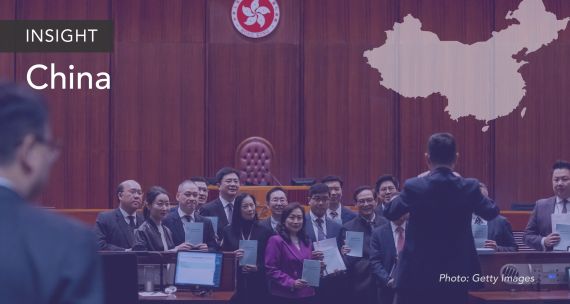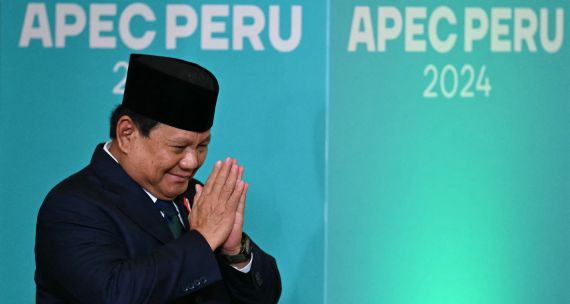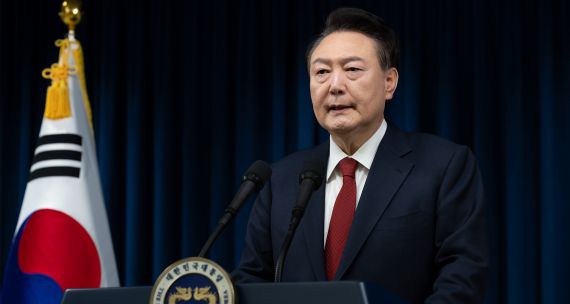On May 20, 2017, the Democratic Republic of Timor-Leste (the country’s official name, using the Portuguese words for East Timor) celebrated the 15th anniversary of the restoration of its independence.

“Congratulations on the anniversary of the restoration of independence,” banner in Maliana, Timor-Leste, May 2015. Photo: David Webster.
Once the focus of human rights protests, Timor-Leste has fallen out of the headlines since the violent end of Indonesian rule and the country’s emergence as the 21st century’s first new independent state. Today, declining oil revenues leave some observers muttering about a “failed state” in the making, while others celebrate the elections and orderly transitions of power that mark a maturing democracy. But Timor-Leste is far from failing.
[Read author David Webster's post-election postscript at the end of this article.]
Timor-Leste declared its independence in 1975. Days later, the armed forces of Indonesia invaded and claimed it as their country’s 27th province. But Timorese resistance outlasted the rule of Indonesia’s General Suharto, who fell from power in 1998. In a referendum run by the United Nations in 1999, a strong majority of Timorese voted for independence. Despite a wave of violence by pro-Indonesia forces, the UN stepped in and supervised a transition to Timorese self-government in 2002. The flag proclaimed in 1975 is the flag today.

March with the flag, Restoration of Independence Day ceremonies, Maliana, Timor-Leste, 20 May 2015. Photo: David Webster.
The 15 years since independence show impressive democratic consolidation, periods of rapid economic growth fuelled by oil revenues – with consequent fears for the future when oil runs out – and proactive Timorese leadership among developing nations in areas as diverse as development, extractive industries management, women’s rights, and peacebuilding.
Political clashes, consensus, and consolidation
In 2002, Kay Rala Xanana Gusmão, a guerrilla leader who had revived and united resistance to Indonesian military rule inside East Timor, was a unifying figure. He was dubbed East Timor’s Nelson Mandela after Indonesian soldiers captured him in 1992. From his prison cell, he became a figure of resistance lionized by Timorese youth activists and non-Timorese supporters.

Heroic imagery from the Xanana Gusmão Reading Room, Dili, Timor-Leste, July 2015. Photo: David Webster.
So Xanana was an easy choice as the first president of the restored republic. But he chafed under the restricted powers of the presidency – most power was held by Fretilin (the Revolutionary Front for an Independent East Timor), which had proclaimed independence in 1975 and won a significant majority in the first post-Indonesian election in 2001. So Xanana entered politics himself as head of a new party that he called the National Congress for Timorese Reconstruction (CNRT). East Timor’s second parliamentary elections in 2007 saw Xanana’s CNRT use themes of economic development and the leader’s charisma to claim a strong second-place finish to Fretilin. Xanana then cobbled together a coalition able to command a parliamentary majority and push Fretilin into opposition. The same year, Nobel Peace Prize laureate José Ramos-Horta, running as an independent, defeated Fretilin’s candidate for president in a run-off election. In 2012, Xanana’s CNRT-led coalition won re-election, and another independent, former guerrilla leader Taur Matan Ruak, became the third president.
In 2015, Xanana stepped down as prime minister, naming a Fretilin figure in his place. The new government, under Dr. Rui Maria de Araújo, retains Xanana as the minister in control of economic development, while representing in effect a new government backed by all the major parties. The CNRT went on to endorse Fretilin’s Francisco Guterres (popularly known as Lú-Olo) in the March 2017 presidential elections, which he won handily against a lesser-known field of candidates.
Under the unity government, then-president Taur Matan Ruak periodically criticized the government. Following Xanana’s example, he has formed his own Popular Liberation Party to contest the July 2017 parliamentary elections. Political opposition, in other words, will continue even amid a move toward so-called “consensus politics.”
The political system remains dominated by a small, elite group of men drawn from the “1975 generation.”

The “1975 generation” of Timorese leaders depicted on the windows of the Archives and Museum of the Timorese Resistance, 2013. Top left: Mari Alkatiri in 1975. Bottom right: José Ramos Horta in 1975. Photo: David Webster.
Still, a few conclusions can be drawn from this sketch of Timorese politics since 2002. First, there is minimal violence during election campaigns. The losing parties campaign fiercely and sometimes contest the ballots, but they accept the results. A political crisis in 2006 turned 100,000 Timorese into internally displaced people, but they have now returned to their homes and the UN peacekeeping presence ended in 2012. There have been two peaceful changes of government and prime minister. Four presidential elections have resulted in four different presidents, each completing his term. The new prime minister is the first from the younger generation, suggesting a renewal of the political elite is at least possible – especially once Xanana retires.
An oil economy in search of diversification
The end of Indonesian rule, despite Indonesian government claims to have delivered economic development, left East Timor as Asia’s poorest country. Growth rates in recent years of between roughly three and six percent appear promising. Signs of prosperity abound in the Timorese capital of Dili, where wealthier locals can access Burger King drive-through service and other markers of western-style consumption.
But rural areas remain poor and the economy relies heavily on oil revenues. Although Timor-Leste has avoided the worst of the “resource curse” that bedevils many states, diversification away from oil is vital. The respected non-governmental organization La’o Hamutuk estimates that the country’s oilfields will no longer be profitable by 2019, a finding supported by figures from Timor-Leste’s finance ministry. Timor-Leste modelled its petroleum fund on that of Norway, seen as a well-regarded state that has invested its oil wealth in a transparent, sustainable, and successful manner. The Timorese fund’s 2015 annual report pegged assets at close to US$16B, though unsustainable withdrawals have seen a balance once exceeding US$17B fall to US$16.6B by the end of May 2017. This is comparable to the Alberta Heritage Savings Trust Fund in overall value. Although the Timorese population is less than one-third of Alberta’s, this will only buy a few years of breathing room to diversify – it will not provide long-term security. Timorese political leaders are aware of this dilemma and have announced efforts to diversify toward industry, tourism, and other sectors, but have not yet announced any plan to get there.
The government hopes to prolong the exhaustion of oil reserves by accessing new oilfields in the seas between Timor and Australia. The Timor Sea is currently divided according to a complex revenue-sharing agreement between the Australian and Timorese governments that was concluded under circumstances that the Timorese side has called coercive and unfair. The two countries are far from equal in size and power. During negotiations, Australian officials pressured Timorese counterparts and spied on them using an aid program as cover.
Timor-Leste aims to replace revenue-sharing with a maritime border along the “median line” halfway between the two countries – the usual means of settling maritime border disputes, as used between Canada and Greenland, for instance. The campaign for a median line also has political benefits – it unites many Timorese to wage a “second independence struggle” against Australia.
Still, long-term dependence on oil has not served many countries well, and Timor-Leste’s government will need to heed those voices advocating a rethink of the country’s economic path away from megaprojects and toward more locally grounded and community-focused development solutions.[1]
Timor-Leste’s leadership in niche diplomacy
“Goodbye conflict, welcome development,” proclaim banners on government ministries in Dili. The same words appear atop the website of the g7+, a forum of “fragile states” formed under Timorese leadership in 2010 as a slightly mischievous tip of the hat to the G7 group of wealthy industrialized countries. Timor-Leste’s government vigorously rejected depictions of the country as a “failed state.” Rather than accepting the label, Timor-Leste led a campaign to restore agency to “fragile states” by convening seven countries emerging from conflict (the group now has 20 members). The g7+ developed a “New Deal” for building fragile states and teamed up with major donor states to work out a set of fragile state principles. These principles aim to move away from the crude measurements and value judgments embodied in indexes that try to rank state “failure,” and to move toward putting fragile states in the driver’s seat of their own journeys.[2]
The Timorese have made efforts to take an international leadership role in an area of key concern – what has been called “niche diplomacy.” Diplomatic campaigns for independence saw a small band of activists representing a small country battle against the regional giant of Southeast Asia, Indonesia. Their campaign’s weak position forced them to adopt nimble tactics and form alliances with non-traditional actors who carried moral weight, from the Dalai Lama of Tibet to influential Catholic bishops to Amnesty International. In 1997, for instance, Ramos-Horta headlined a “People’s Summit” in Vancouver as the Asia-Pacific Economic Cooperation (APEC) summit met, offering a vision of human rights counterpoised against the economics-first philosophy of APEC leaders including Indonesia’s Suharto. The strategies and alignments forged by Timorese pro-independence diplomats may have shaped independent Timor-Leste’s diplomatic profile as a country seeking to build alliances around themes clustered around global justice.
The g7+, in these terms, is an effort to shift the language of development from state “failure” toward hope in the face of long odds – very much echoing the themes of the earlier campaign for Timorese independence. It aims to group states placed in a position of weakness or even helplessness in the global system, shifting their weakness into collective moral strength. Timorese diplomats do not try to intervene in every global issue, but they are far from shy in asserting leadership in targeted areas such as the economic development of “fragile states.”
A similar “niche” emerged when UN bodies concerned with women’s rights merged in 2010 to form UN Women. The usual pattern for election to seats on various UN bodies is that regional groups get together and agree on a slate of candidates for election, and the UN as a whole rubber-stamps these slates by voting them in unopposed. (Not all regional groups do this, but it is common in the Asian group.) Elections for the UN Women board were no different, but when Iran’s candidacy drew global outrage, Timor-Leste took the highly unusual step of breaking ranks and running against Iran – successfully.
Timor-Leste’s representative to that first term on the UN Women board, Milena Pires, is now the country’s ambassador to the UN. The country has a long way to go on violence against women, but it has signalled a leadership role in the region on this issue. A similar move came in June 2017 with Timor-Leste’s first LGBTI Pride parade. At a time when neighbouring countries seem to be moving toward a more repressive stance on the rights of sexual minorities – symbolized by the public caning of two gay men in Indonesia’s Aceh province – Timor-Leste is leading by example. The move came from within Timorese civil society, but was quickly endorsed by the prime minister in a powerful speech.
Not on the path to failure
Some experts offer a bleak view on Timorese prospects after 15 years of independence. An Australian academic, for instance, recently criticized the Timorese campaign for a maritime border with Australia, arguing “this pursuit of independence may actually create a failed state in Timor-Leste.” By pushing Australia, she suggested, Timor-Leste might become the “architect of its own demise.” An Australian parliamentary committee seized on this unsupported prediction to bolster the Australian government’s predatory policy toward Timor-Leste – and then blame the Timorese for the outcome.
But experts have offered bleak views before. It was received wisdom during the Indonesian occupation (1975 to 1999) that Timorese independence was a “lost cause” and Indonesian rule an “accomplished and irreversible fact.” Experts and governments were united: Timorese independence was impossible.
Yet Timor-Leste did become independent. As Timorese academic Guteriano Neves has written:
“It is important to acknowledge ... the complex challenges that Timor-Leste is facing. … Timorese have to live with these challenges and working together to overcome them. Viewing these challenges as the product of social and political dynamic and using these challenges as the basis to claim that Timor-Leste is a failed state is ahistorical, missing the context, and it is an oversimplification of the issue.”
Why this matters to Canada
Canadian governments called Timorese independence a “lost cause” for two decades, but then engaged actively in the 1999 independence referendum and in post-conflict reconstruction. Today, the recent report of the country’s truth and reconciliation commission offers new prospects for Canadian re-engagement in ways that foreground global reconciliation and human rights. Some possible actions could be:
- Promoting the Timorese truth commission report globally as a model of good practice;
- Apologizing for the Canadian supply of military equipment to Indonesia between 1975 and 1999;
- Supporting reparations for Timorese victims and efforts by Timorese civil society groups; and
- Promoting contacts between those involved in truth and reconciliation processes in multiple countries across borders.
Canada played a role in development and reconstruction after the end of Indonesian rule in 1999, and then-prime minister Jean Chrétien’s government pledged to remain for the long term. Canadian involvement flagged thereafter, with most Canadian non-governmental organizations (NGOs) departing. One exception was USC Canada, whose program in Timor-Leste supports local NGO RAEBIA (Resilient Agriculture and Economy through Biodiversity in Action). The USC-backed “seeds of hope” program provides seeds and support to farmers in an effort to raise production, promote biodiversity, and provide a more secure livelihood for local farmers and communities. This more locally grounded approach is less liable to be blown by the ever-shifting winds of the global compassion industry that prompts NGOs to pack up shop and relocate to Myanmar, or South Sudan, or the latest humanitarian catastrophe. It is also an approach that aligns well with Timorese NGO calls for a more small-scale and local focus for development programs. Recently, there are signs that Canada may be re-engaging with development in Timor-Leste.
The seeds of co-operation sown by Canadians in Timor-Leste have not all blossomed. Fifteen years later, there is something to be said for Canadians noticing Timor-Leste once again – not as a distant trouble spot, but as a partner in international affairs. What Foreign Minister Chrystia Freeland calls “new shared human imperatives” require Canada to look beyond traditional partners and traditional patterns. In prioritizing climate change, Canada will need to support the most threatened states – Timor-Leste among them. Timor-Leste’s current minister of commerce, industry, and the environment, Constâncio Pinto, sees Canada's Minister of the Environment and Climate Change, Catherine McKenna, as a potential ally based on her past experience as a UN adviser in Timor-Leste. In seeking a “feminist foreign policy,” Canada may find Timor-Leste more like-minded than many other countries in its region. Timor-Leste is an obvious fit for the new “feminist international assistance policy” promoted by International Development Minister Marie-Claude Bibeau, with strong women’s NGOs and a vibrant civil society sector. And if Canada wants to promote LGBT+ rights globally, it could do worse than making common cause with governments like Timor-Leste’s that are taking a stand on this issue.
Finally, in all these goals, Canada may have more to learn than it does to teach. It may find quieter but more creative global voices – Timorese voices among them – to be worth heeding.
POSTSCRIPT: July 24, 2017
Timor-Leste’s first parliamentary elections since the UN mission’s final departure went off without a hitch on July 22, 2017, according to observers. With the preliminary vote count complete two days after election day, Fretilin has topped the polls with about 30 per cent of the vote on the strength of an impressive and Internet-savvy campaign.
According to projections from La’o Hamutuk, it returns to the leading position in parliament with a probable 23 seats in the country’s proportional representation system. Xanana Gusmao’s CNRT falls to second place with a predicted 22 seats. Since neither party has won a majority and both are committed to continued co-operation, they could renew their coalition. Alternatively, as Australian scholar Michael Leach writes, they could invite one of the three other parties that also won over four per cent of the vote, and thus won seats, into a coalition.
These three are the Democratic Party, a well-organized and longstanding party originally formed by clandestine youth activists during the years of Indonesian rule, which is slated to pick up 7 seats, plus two new entrants into parliament. The new third-place party, with over 10 per cent of the vote and a probable 8 seats, is outgoing president Taur Matan Ruak’s PLP, which put together a strong performance on an anti-corruption platform that also called for a more grassroots approach to development. The PLP combined appeals to the independence struggle and the younger generation; it is perhaps the party closest to Timorese NGOs. Also entering parliament with a predicted 5 seats is Khunto, a party that mobilized unemployed youth voters and echoed the PLP’s calls for change. Alongside consensus politics and appeals for national unity, strong voices for a new approach to development will be heard in parliament in the next five years. - By David Webster
[1] Laurentina “mica” Barreto Soares, “Development and foreign aid in Timor-Leste after independence,” in Flowers in the Wall: Memory, Truth and Reconciliation in Timor-Leste, Indonesia and Melanesia (forthcoming from University of Calgary Press, 2017).
[2] Darren Brunk, “Conclusion,” in From Kinshasa to Kandahar: Canada and Fragile States in Historical Perspective, Michael K. Carroll and Greg Donaghy, eds., (Calgary: University of Calgary Press, 2016), 247.



